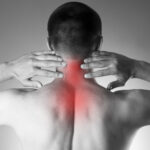Your Path to Vertigo Recovery: Proper Spinal Alignment
If you suffer from vertigo, you know how frustrating the condition can be. Vertigo can strike suddenly, when you’re getting out of bed, turning your head, or just walking across the room. The dizziness, nausea, and sense that everything is spinning can derail your day. Over time, this feeling can erode your confidence and hinder your ability to function normally.
Unfortunately, for many patients, it can be a challenge to find relief. You may be one of the numerous vertigo sufferers who have spent months or years looking for answers. Maybe you’ve been dismissed by doctors or even told the condition is “all in your head.” Being sent home without answers can feel especially defeating as you await your symptoms returning.
Standard medical tests often come back normal, which leaves patients feeling left without answers, while symptoms continue to disrupt their lives. But just because it’s difficult to measure with traditional medical methods doesn’t mean your vertigo isn’t real. And it doesn’t mean you’re out of options. We’re here to tell you that your symptoms are real and you are not alone. You do have options, and relief is possible.
At Upper Cervical Chiropractic of Monmouth, we take a deeper approach to discover how your body may be compensating for past injuries or imbalances. Gentle, non-invasive spinal realignment through Quantum Spinal Mechanics 3 (QSM3) may provide the lasting relief you’ve been looking for. Learn how upper cervical chiropractic can help the body return to its natural state of balance and relieve the debilitating symptoms of vertigo.
Table of Contents
How Spinal Alignment Affects Balance
Many people don’t realize how closely the spine, especially the top two vertebrae (C1 and C2), is connected to the systems that control balance. These bones sit just below the skull and surround the brainstem. This area acts like a relay station between your brain and body.
If the C1 and C2 vertebrae are out of place or stop moving properly due to injury, posture, or past trauma, it can affect the way your brain processes balance signals. This is because your brain receives a significant amount of information regarding your body position from this area of your spine and the muscles at the base of your skull.
An upper cervical misalignment (i.e., subluxation) may affect cerebral spinal fluid (CSF), restrict blood flow, or cause muscle tension that further disrupts communication between the brain, inner ear, and body. Over time, that disruption can trigger vertigo symptoms like dizziness, spinning, or disorientation.
You can think of an upper cervical misalignment as a crooked foundation of a house. Even an extremely slight imbalance can cause everything above to adjust, and eventually, those small shifts can cause big problems. A misalignment can interfere with how your brain processes signals from the eyes, ears, and body. It can also strain muscles, reduce blood flow, or affect nerve communication. Any of these changes can contribute to vertigo, dizziness, and the associated disorientation.
Vertigo Is Not Just About the Ear Crystals
You may have heard that vertigo is caused by crystals in your ear and that’s partly true. In cases of BPPV (Benign Paroxysmal Positional Vertigo), tiny calcium crystals in the inner ear shift out of place and send the wrong signals about movement and balance.
But what many people don’t realize is that the inner ear doesn’t work in isolation. It’s part of a much larger system that includes the brainstem, nerves, eyes, and spine. In some cases, vertigo may be linked to conditions like Meniere’s disease or previous trauma to the head and neck. When your upper cervical spine is misaligned, it can affect how your body interprets those signals, even making your ear feel like the problem when the actual issue lies elsewhere.
That’s why some patients find only temporary relief from traditional maneuvers or medications. If the body is still out of alignment, the symptoms may keep coming back.
Why Meds and Quick Fixes Often Don’t Work
For many people dealing with vertigo, the first line of treatment often includes medication, such as anti-nausea drugs, steroids, decongestants, diuretics or vestibular suppressants. These can dull the discomfort temporarily, but they don’t address the underlying cause of the symptoms. Over time, relying on medications can lead to frustration, especially if the dizziness keeps coming back.
Balance therapy, vestibular rehabilitation, or techniques like the Epley maneuver to reposition inner ear crystals might provide complete relief or may just be a temporary fix. However, there are times when they may not be a long-term solution. Suppose your vertigo is tied to structural compensation from an old injury, poor posture, or a misalignment elsewhere in the body. In that case, these quick fixes may mean you can expect more disturbances to occur.
That’s where QSM3 comes in. Rather than masking symptoms, this gentle chiropractic method focuses on helping restore the proper alignment and movement of the upper cervical spine, which serves to correct the neurological impulses that the brain receives about your body’s position (i.e., proprioception). By working with your body’s own natural mechanics, QSM3 supports longer-term or permanent relief from recurring vertigo.
Why the Real Issue Might Be Below the Neck
According to QSM3 principles, vertigo isn’t always just a head or ear issue. Past injuries, even ones long forgotten or inconsequential to your life, can cause these subtle shifts in the spine and body. To keep your eyes level with the horizon, your body uses something called the righting reflex. It’s an automatic response that adjusts the head and neck to compensate for imbalances below.
Over time, that constant compensation can pull the top of the spine, especially the atlas (C1) and axis (C2), out of alignment. These bones are located right near the brainstem, which is a crucial area for processing balance and motion. When they shift, even slightly, it can strain muscles and disrupt communication between body systems. This disruption often triggers episodes of vertigo. Even if your symptoms feel like a fluke, they may be your body’s way of asking for help.
How Upper Cervical Chiropractic of Monmouth Can Help
We start each initial consultation at Upper Cervical Chiropractic of Monmouth by listening to your story. For patients who have felt dismissed by providers, this can feel validating and comforting. As part of your evaluation, we offer a host of precise diagnostic tools, such as herat rate variability (HRV), infrared thermography (IT), surface electromyography (sEMG), postural and spinal assessments, and digital X-rays (if indicated) to assess how the body has adapted to past injuries or imbalances.
If QSM3 looks like a good fit and we feel we can help you, we’ll walk you through the process and give you time to ask questions so you can decide what comes next. You’ll never be rushed, judged, or left in the dark.
Rest assured, at Upper Cervical Chiropractic of Monmouth, you won’t find cracking, popping, or rushed adjustments at our practice. Instead, we use the specialized “gentle, low-force” QSM3 method, which focuses on realigning the spine by addressing the entire body’s structure and posture, not just the neck. These are precise, gentle techniques that don’t involve harsh or sudden movements. If we find that you’re a good candidate for care, we’ll explain the process step by step and answer any questions before you decide how to proceed.
Don’t Put Off Finding Vertigo Relief Any Longer
When vertigo disrupts your life, it’s easy to put off seeking care if past attempts haven’t worked or left you feeling unheard. Don’t let that keep you from accessing the relief you deserve. Many patients at Upper Cervical Chiropractic of Monmouth say their only regret was waiting as long as they did. Once they experience how much better they feel with gentle, QSM3-based care, they wonder why they didn’t come in sooner.
Our practice focuses on correcting imbalances in the spine and posture to restore the body’s natural alignment. This allows your body to function at its best, giving it the ability to heal itself naturally.
Haven’t you waited long enough to find relief? Schedule a free consultation today and take the first step toward getting back to life before vertigo.

Dr. Arbeitman
Dr. Arbeitman, a trailblazing figure in Upper Cervical Chiropractic, established Upper Cervical Chiropractic of Monmouth, LLC in 2005. Dedicated to promoting holistic wellness, he has empowered countless individuals to embrace Upper Cervical Chiropractic care as an integral part of their health journey. Graduating Magna Cum Laude from Logan College of Chiropractic and holding a Bachelor of Science in Kinesiological Sciences from the University of Maryland at College Park, Dr. Arbeitman is a licensed practitioner in New Jersey who has met the rigorous standards set by the National Board of Chiropractic Examiners. Beyond his extensive educational achievements, he has earned multiple scholarships and accolades for his academic prowess and exemplary clinical performance. Dr. Arbeitman's holistic approach encompasses spinal and nervous system care, lifestyle guidance, fitness evaluation, and nutritional expertise, all founded on the belief that the doctor-patient relationship is paramount to the healing process.




